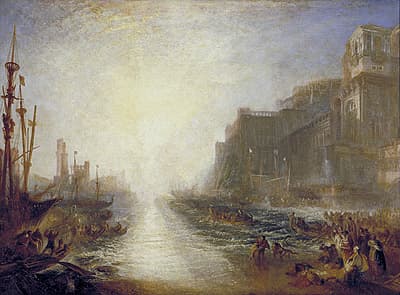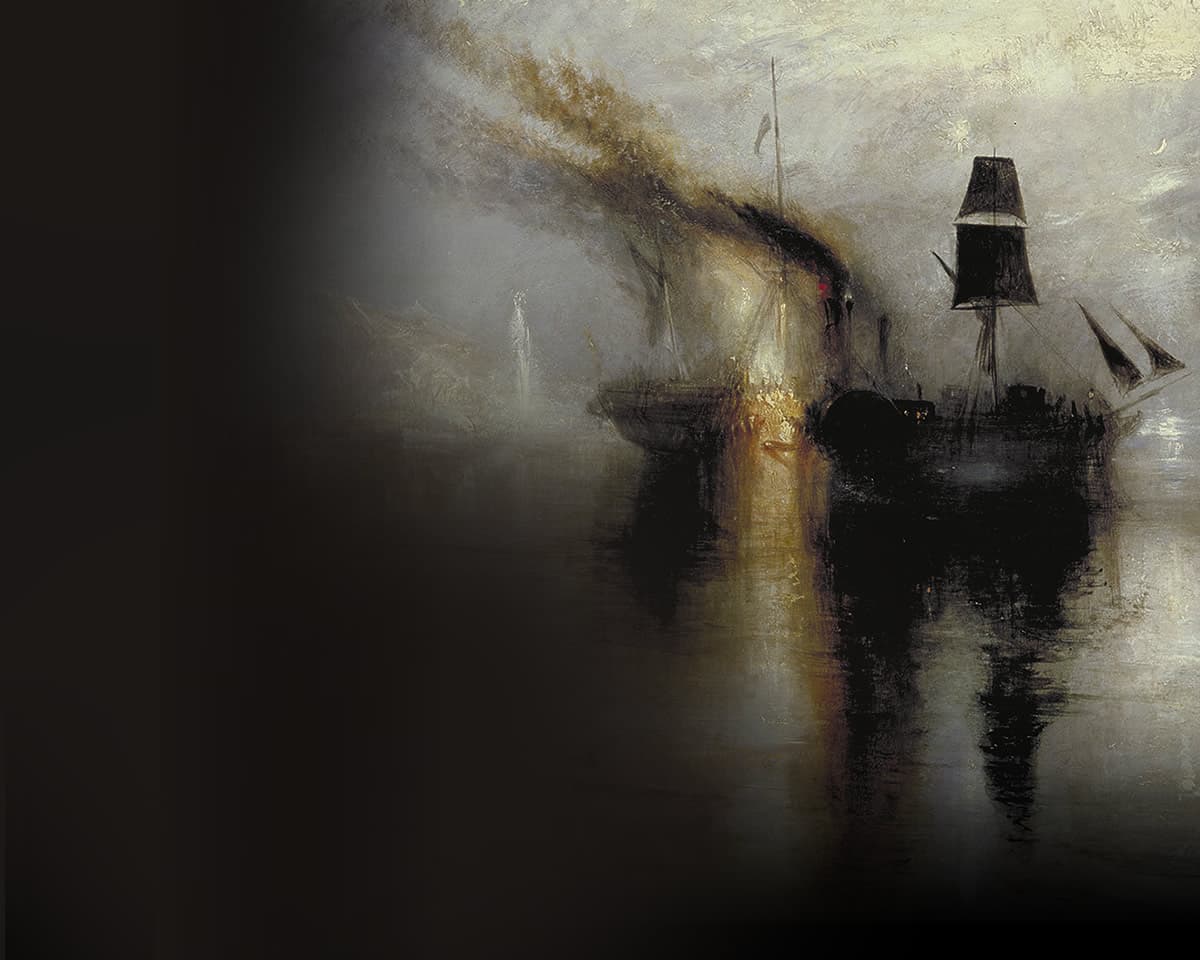
J M W
TURNER
Great Britain
1775
–
1851
89.5 (h) x 123.8 (w) cm Tate Accepted by the nation as part of the Turner Bequest 1856 Photo: © Tate 2013
On his second Italian tour in 1828, Turner painted and exhibited in Rome where crowds came to see his dramatic landscapes. Whilst many struggled to comprehend the intense colours and hazy forms, others praised his dazzling vision as ‘more Italian than Italy itself’. Turner modelled this painting on a famous seaport by Claude Lorrain in the Uffizi Gallery, Florence. The Roman general Regulus failed to negotiate the release of Carthaginian prisoners and was punished by the removal of his eyelids.
On his second Italian tour in 1828, Turner painted and exhibited in Rome where crowds came to see his dramatic landscapes. Whilst many struggled to comprehend the intense colours and hazy forms, others praised his dazzling vision as ‘more Italian than Italy itself’. Turner modelled this painting on a famous seaport by Claude Lorrain in the Uffizi Gallery, Florence. The Roman general Regulus failed to negotiate the release of Carthaginian prisoners and was punished by the removal of his eyelids.
On his second Italian tour in 1828, Turner painted and exhibited in Rome where crowds came to see his dramatic landscapes. Whilst many struggled to comprehend the intense colours and hazy forms, others praised his dazzling vision as ‘more Italian than Italy itself’. Turner modelled this painting on a famous seaport by Claude Lorrain in the Uffizi Gallery, Florence. The Roman general Regulus failed to negotiate the release of Carthaginian prisoners and was punished by the removal of his eyelids.

